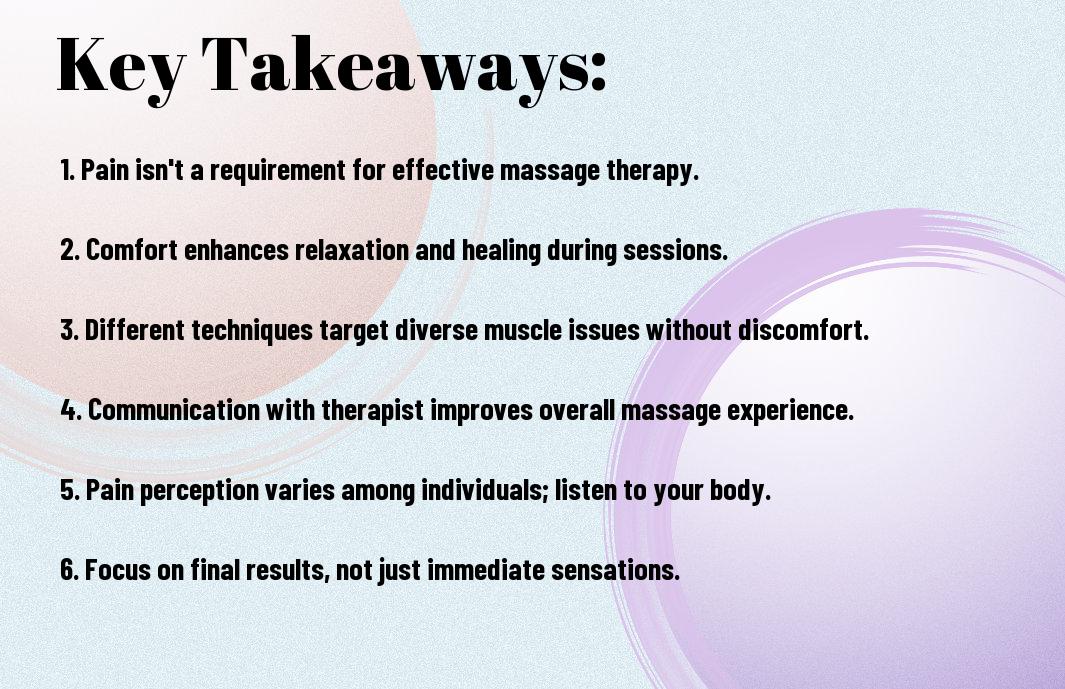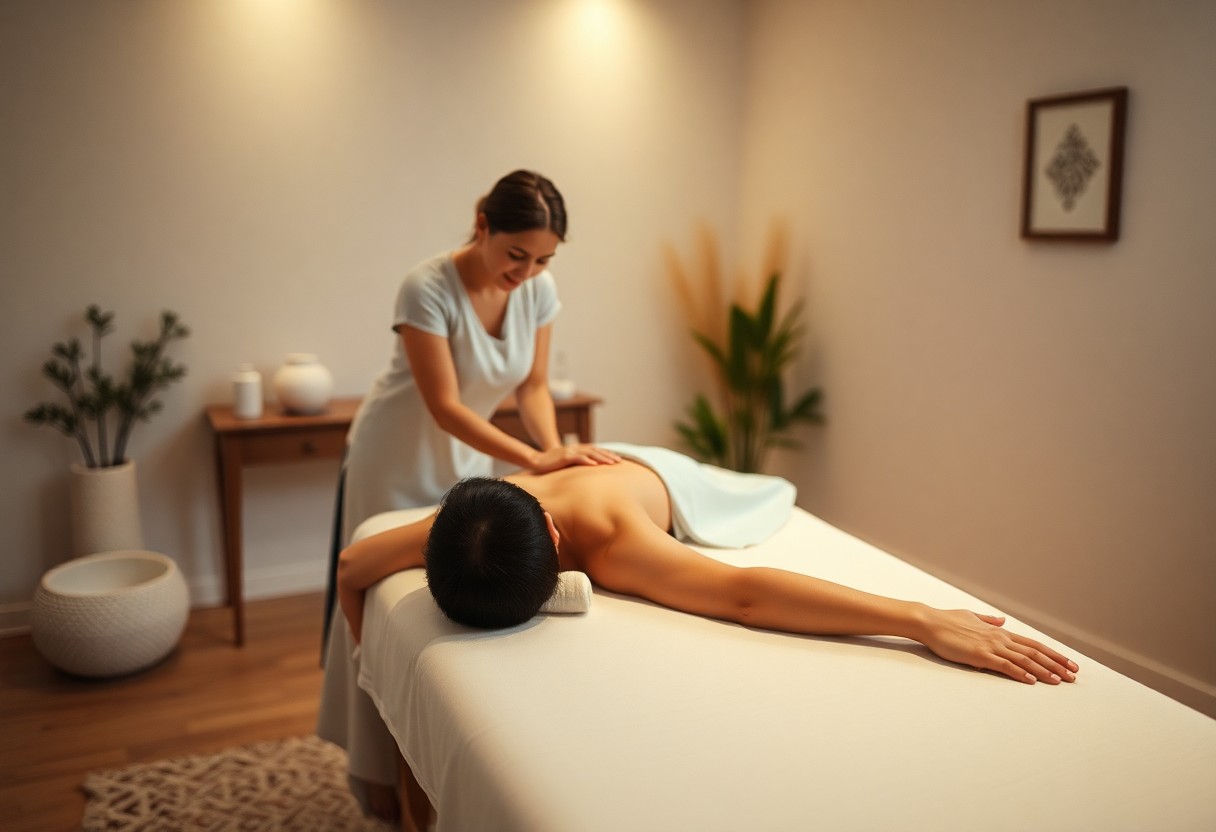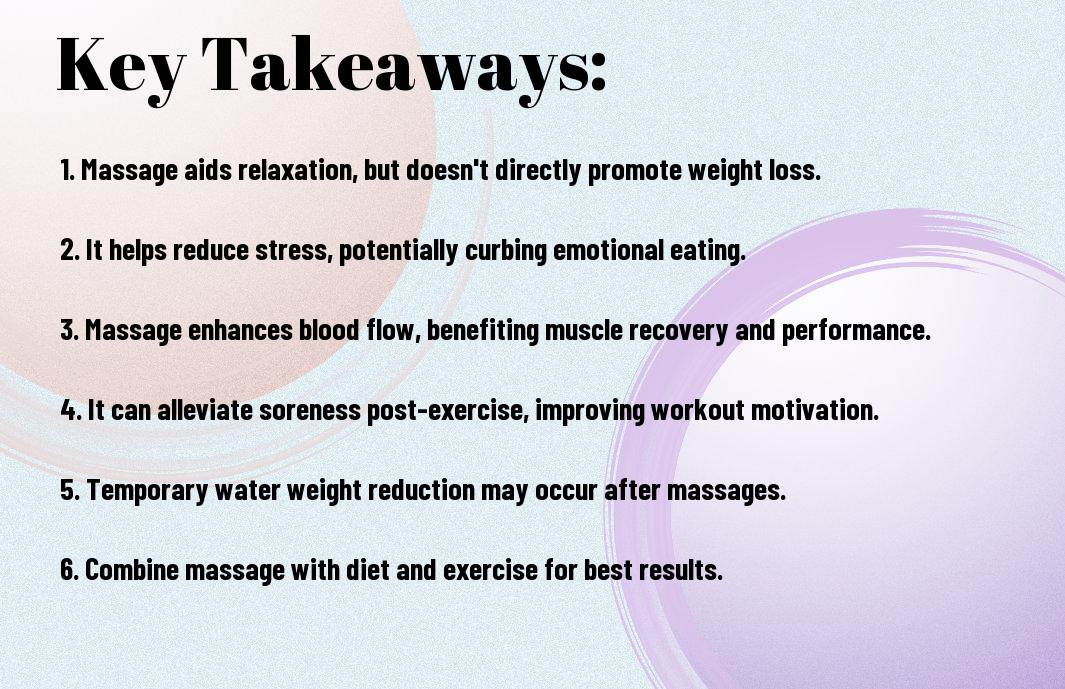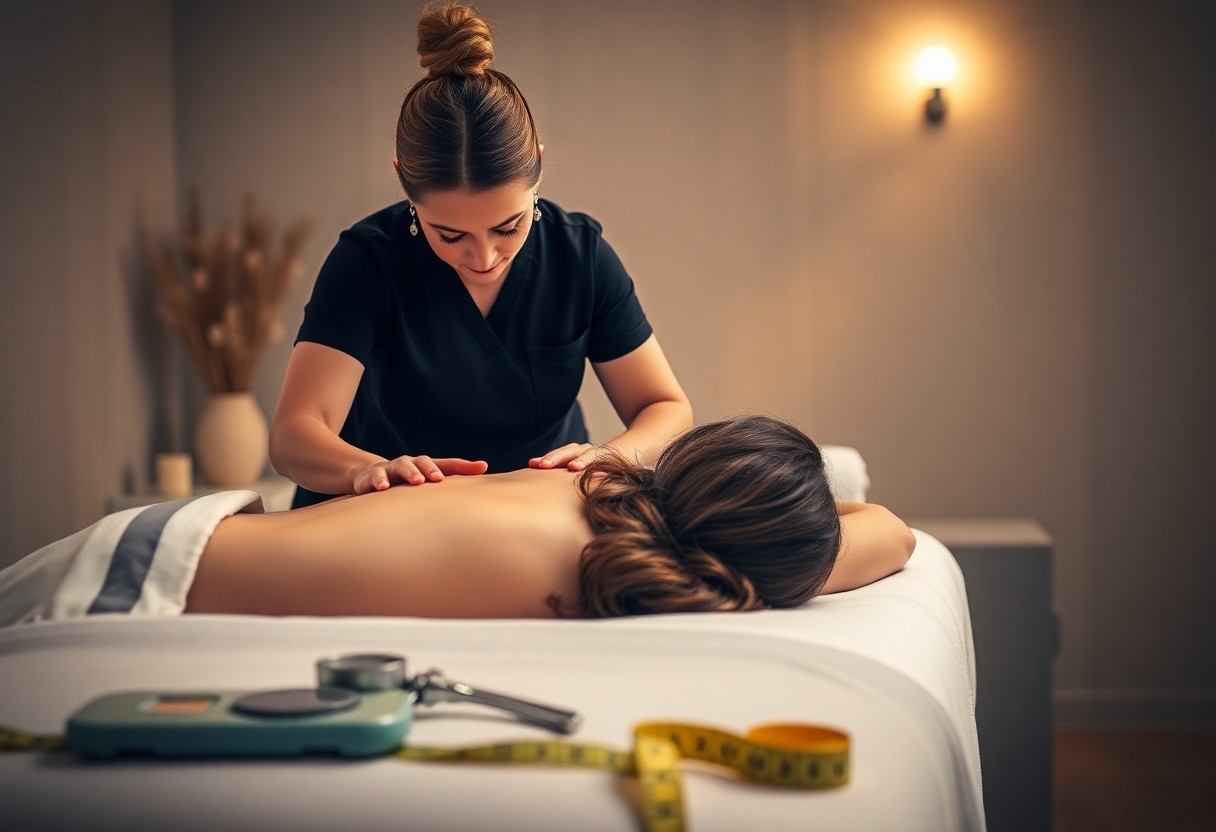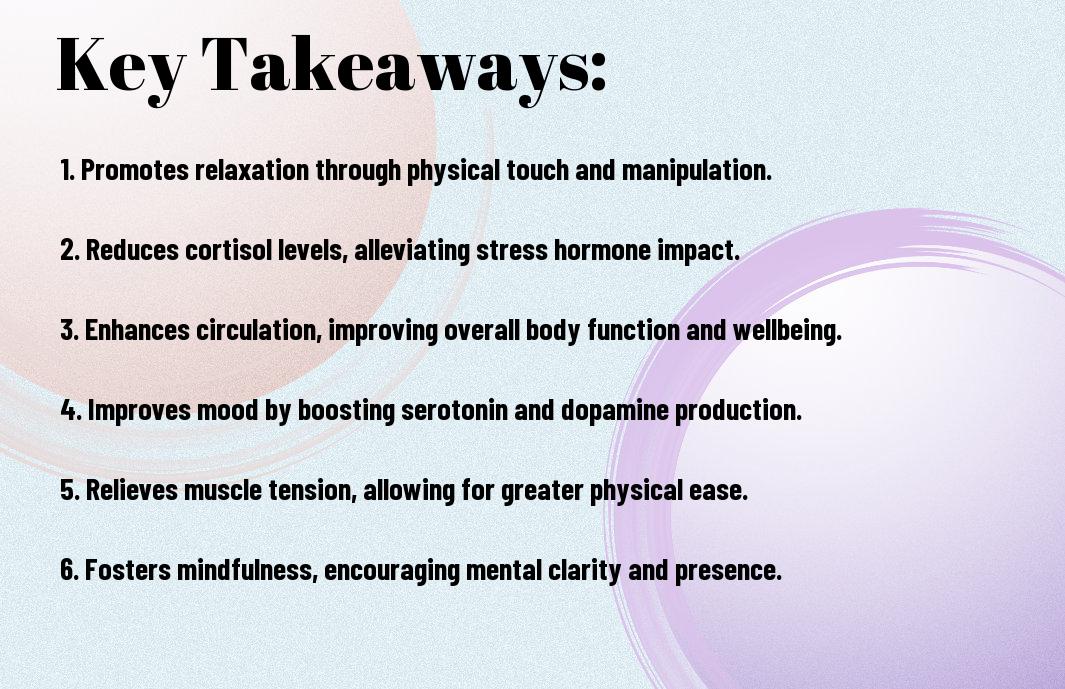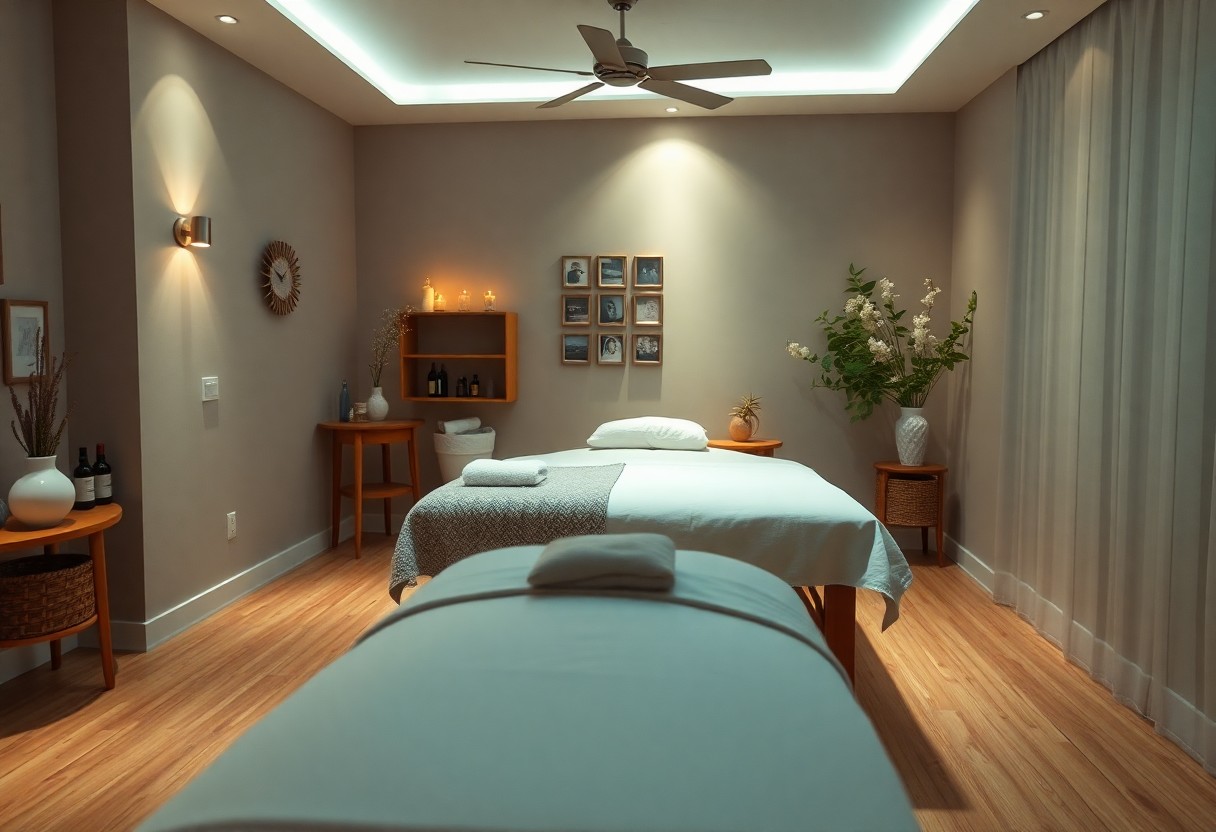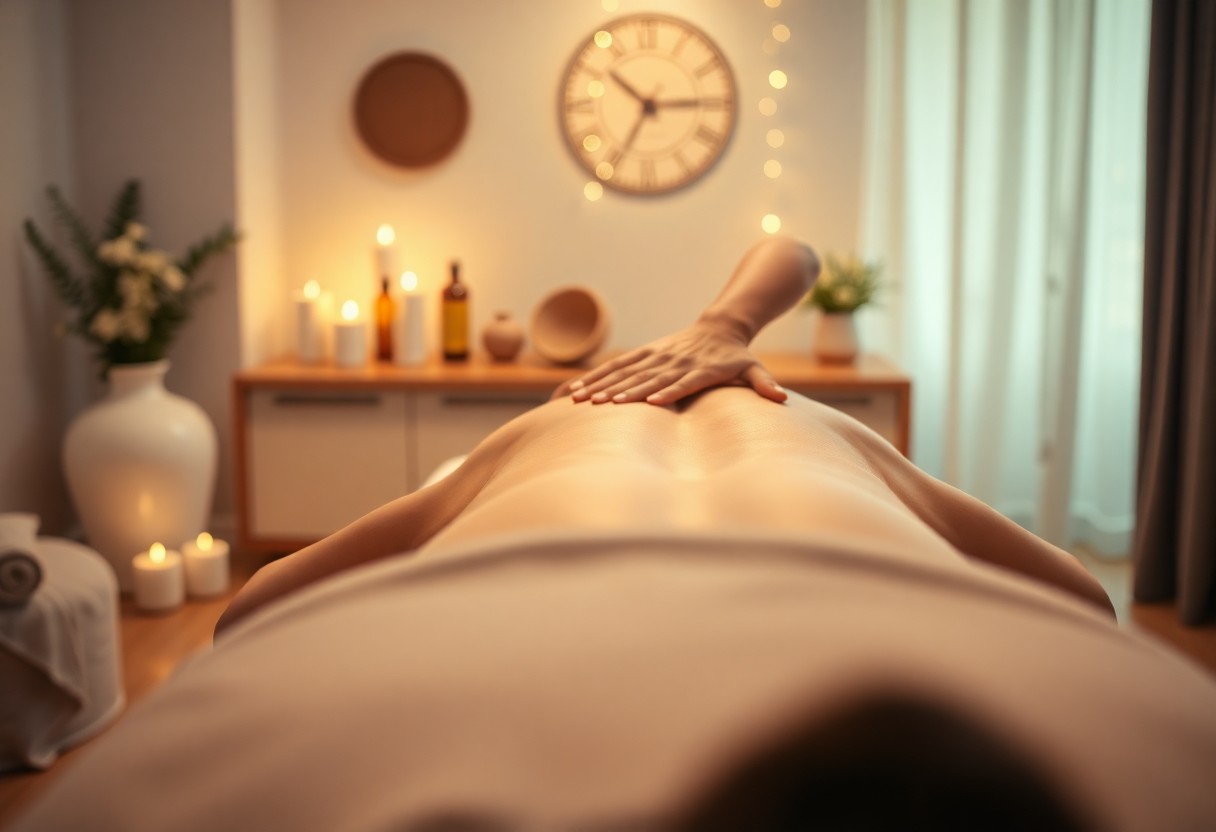Toxins are often associated with various health issues, and many people believe that massage can help in their removal from the body. You may have heard that massage encourages lymphatic drainage, improves circulation, and can even enhance your body’s natural detoxification processes. However, it’s imperative to dissect these claims and understand what scientific evidence supports them. In this post, you’ll explore the relationship between massage and toxin elimination, giving you a clearer picture of whether a massage truly benefits your detox journey.
Key Takeaways:
- Limited Evidence: Scientific research shows that while massage can improve circulation and lymphatic flow, there is currently no definitive proof that it significantly removes toxins from the body.
- Relaxation Benefits: Massage promotes relaxation and reduces stress, which can lead to improved overall wellness, even if it doesn’t directly eliminate toxins.
- Hydration Importance: Staying hydrated after a massage is important, as it helps support natural detoxification processes in the body.
Understanding Toxins in the Body
As you explore the concept of toxins, it’s crucial to understand their role in your body. Toxins are harmful substances that can disrupt cellular function and contribute to various health issues. They can originate from both internal and external sources, affecting your overall well-being. Understanding these toxins helps you make informed decisions regarding detoxification and wellness practices, including massage therapy.
Definition of Toxins
Before delving deeper, it is important to define what toxins are. Toxins are typically considered harmful substances that may be produced by your body or introduced through environmental sources, leading to adverse effects on your health if accumulated in sufficient quantities.
Sources of Toxins
Sources of toxins can stem from various places, including environmental pollution, processed foods, and even stress. Understanding these sources enables you to identify potential contributors to toxin buildup in your body, allowing for more effective wellness strategies.
Definition of toxins encompasses a wide range of substances. They can emerge from daily life components such as heavy metals found in air or water, pesticides ingested through conventionally grown produce, and additives contained in processed foods. Moreover, your body can produce metabolic waste during normal cellular activities. Emotional and psychological stress can also create metabolic conditions that may produce toxins, showcasing that both internal and external factors are crucial in evaluating toxin exposure.
The Science Behind Massage Therapy
If you’ve ever wondered about the scientific principles underlying massage therapy, it’s vital to recognize how this practice can impact your body. Massage therapy stimulates the parasympathetic nervous system, promoting relaxation and enhancing blood circulation. This process may help improve overall well-being and facilitate the body’s natural detoxification processes.
Physiological Effects of Massage
Against common beliefs, the physiological effects of massage extend beyond soothing muscles and alleviating stress. It can lead to significant improvements in blood flow and lymphatic drainage, which support your body’s ability to remove waste products and toxins more efficiently.
Types of Massage Techniques
To better understand massage therapy, it’s important to familiarize yourself with the various techniques commonly employed. Each technique serves a specific purpose and can deliver unique benefits:
- Swedish Massage
- Deep Tissue Massage
- Sports Massage
- Trigger Point Therapy
- Aromatherapy Massage
Assume that each type of massage can cater to different needs within your personal wellness journey.
| Massage Type | Description |
| Swedish | Gentle strokes for relaxation. |
| Deep Tissue | Focus on deeper layers of muscle. |
| Sports | Targeted for active individuals. |
| Trigger Point | Relieves muscle knots and tension. |
| Aromatherapy | Incorporates vital oils for enhanced relaxation. |
Considering the importance of choosing the right technique, you should align your selection with your individual needs. Each massage type offers distinct benefits, depending on whether you seek relief from pain, stress management, or enhanced athletic performance:
- Focus on your specific health goals.
- Consult with a professional for guidance.
- Explore different techniques as needed.
- Be open to trying various methods.
- Track your progress and response to each type.
Assume that being proactive in exploring these options can enhance your overall well-being.
| Objective | Technique Recommendation |
| Relaxation | Swedish Massage |
| Pain Relief | Deep Tissue |
| Athletic Recovery | Sports Massage |
| Muscle Tension | Trigger Point Therapy |
| Stress Management | Aromatherapy Massage |
The Myth of Toxin Removal
After much discussion in wellness circles, the idea that massage can remove toxins from your body is largely a myth. While you may feel more relaxed and rejuvenated post-massage, the body’s natural elimination processes handle the removal of toxins effectively without any external interventions. The belief that massage drains toxins can lead to misconceptions about the body’s inherent capabilities and the true benefits of massage therapy.
How Toxins are Processed by the Body
Among the primary ways your body processes toxins are the liver, kidneys, and digestive system. These organs work tirelessly to filter out harmful substances from your bloodstream and eliminate waste efficiently. Instead of relying on massage to do the heavy lifting, your body’s systems are designed to manage toxin levels naturally through metabolism and excretion.
Research Findings on Massage and Toxins
Removal of toxins through massage therapy has not been substantiated by rigorous scientific evidence. Studies indicate that while massage can enhance circulation and promote relaxation, it does not have a direct impact on the detoxification process.
And while there are benefits to massage, such as reducing muscle tension and improving circulation, research consistently shows that you cannot rely on it for detoxification. Your body is already equipped with efficient systems for toxin elimination. Thus, you can enjoy massage for its stress-reducing and pain-relieving properties without the expectation of cleansing your body of toxins.
The Role of the Lymphatic System
All bodily systems work in harmony, and the lymphatic system plays a key role in maintaining health by filtering toxins and waste from your body. This system consists of lymph nodes, vessels, and lymph fluid, which circulates and transports these unwanted substances away from your tissues, ultimately supporting your immune function and overall well-being.
Function of the Lymphatic System
Across the body, the lymphatic system serves as a drainage system that collects excess fluids, cellular waste, and toxins. It works alongside the cardiovascular system, ensuring that these substances do not accumulate and cause harm. By transporting lymph fluid through lymph nodes, the system provides a means of filtering out pathogens and contributes to maintaining your body’s equilibrium.
Impact of Massage on Lymphatic Drainage
An effective massage can enhance lymphatic drainage, promoting the efficient removal of waste and toxins within your body. The rhythmic movements and pressure applied during a massage stimulate lymph flow, helping to alleviate congestion and improve circulation. This can lead not only to increased relaxation but also to a noticeable energy boost as your body clears away unwanted substances.
In addition, specific massage techniques, such as manual lymphatic drainage, are designed to target the lymphatic system directly. These techniques can help you experience reduced swelling, enhanced detoxification, and improved immune response. By facilitating lymphatic circulation, massage can assist in expediting the removal of toxins and support your body’s natural healing processes, leaving you feeling rejuvenated and refreshed.
Benefits of Massage Beyond Toxin Removal
Once again, while the notion that massage eliminates toxins is widely debated, the benefits of this therapy extend far beyond this idea. Regular massages can enhance your overall well-being, providing stress reduction, relaxation, pain management, and improved circulation. To explore more about the relationship between massage and toxins, check out Do Massages Really Release Toxins? The Facts.
Stress Relief and Relaxation
Relief from stress is one of the most immediate benefits you can experience from massage therapy. As the tension melts away, your mind and body enter a state of deep relaxation, which can help lower your cortisol levels and improve your mood. This soothing experience not only revitalizes you but also promotes a more balanced lifestyle.
Pain Management and Improved Circulation
Beyond its relaxation benefits, massage also plays a significant role in managing pain and enhancing circulation. By manipulating your muscles and soft tissues, massage therapy can alleviate discomfort, reduce muscle tension, and improve blood flow throughout your body.
Understanding how massage contributes to pain management can empower you to make informed choices about your holistic wellness. This therapy stimulates blood flow, which helps deliver oxygen and nutrients to your tissues, promoting healing. If you suffer from chronic pain conditions or muscle tightness, incorporating regular massages into your routine may lead to significant improvements in your comfort and mobility.
Best Practices for Effective Massage Therapy
Despite the various techniques and benefits of massage therapy, understanding best practices is crucial for maximizing its effectiveness. You should ensure that you are in a comfortable environment, communicate your preferences and concerns with your therapist, and remain open to different modalities tailored to your individual needs. These small adjustments can enhance your experience and the overall results you achieve from each session.
Choosing a Qualified Therapist
Choosing a qualified therapist is fundamental to your massage therapy experience. Look for licensed professionals who have specialized training and positive client reviews. It’s beneficial to consult with your therapist about their techniques and how they align with your personal goals, ensuring that they can provide the support you need for your health and wellness journey.
Frequency and Duration of Treatments
Best practices for frequency and duration of treatments can vary depending on your specific needs. Regular sessions can be more beneficial in managing stress and muscle tension, while some may require less frequent visits for maintenance. Consult with your therapist to tailor a schedule that works best for you, balancing your lifestyle with your therapeutic goals.
A general guideline is to start with weekly massages, gradually adjusting the frequency based on how your body responds and your specific objectives. For example, if you’re recovering from an injury, more frequent sessions might be necessary. As you progress, you might find that bi-weekly or monthly treatments are sufficient to maintain your well-being. By paying attention to your body’s signals and collaborating with your therapist, you can optimize your massage therapy routine for lasting benefits.
Summing up
Hence, while massage therapy can enhance circulation and promote relaxation, it’s important to note that the idea of it removing toxins from your body lacks solid scientific backing. Your body is equipped with its own efficient systems, like the liver and kidneys, to eliminate waste. However, enjoying regular massage can provide valuable benefits like stress reduction and improved muscle recovery, ultimately enhancing your overall well-being. Embrace massage as a beneficial practice, but also understand the role your body plays in maintaining its own health.
Q: Does massage therapy actually remove toxins from the body?
A: The idea that massage therapy removes toxins from the body is a common belief. While massage can improve circulation and promote relaxation, which may assist the body in its natural detoxification processes, there is no conclusive scientific evidence that directly supports the notion that massage eliminates toxins. Instead, massage is more likely to help the body function optimally, which can enhance the natural roles of organs such as the liver and kidneys that are responsible for detoxification.
Q: What are the main benefits of massage if it doesn’t remove toxins?
A: Massage therapy offers numerous benefits aside from detoxification. It can help reduce muscle tension and pain, increase flexibility, improve circulation, promote relaxation, reduce stress and anxiety, and enhance overall well-being. These benefits contribute to better physical and mental health, which can facilitate the body’s natural detox processes.
Q: How does massage affect circulation in the body?
A: Massage therapy stimulates blood flow and improves circulation by applying pressure to muscles and tissues. This action can increase the delivery of oxygen and nutrients to cells and help remove waste products from the body more efficiently. While enhanced circulation is beneficial, it does not directly correlate with the removal of toxins as commonly understood.
Q: Are there specific types of massage that are better for detoxification?
A: While no specific type of massage is proven to remove toxins, certain techniques, such as lymphatic drainage massage, are believed to support the lymphatic system, which plays a role in immune response and the removal of waste from the body. Other types, like Swedish or deep tissue massage, promote relaxation and circulation, which can help the body operate more effectively but should not be relied upon as a detox method.
Q: How can I support my body’s detoxification process alongside massage therapy?
A: To support your body’s detoxification process, consider a holistic approach that includes a balanced diet rich in fruits and vegetables, staying hydrated, exercising regularly, getting adequate sleep, and reducing the intake of processed foods and harmful substances. Coupling these habits with regular massage therapy can enhance your overall health and well-being, encouraging your body to function at its best.


